Welsh Ponies and Cobs
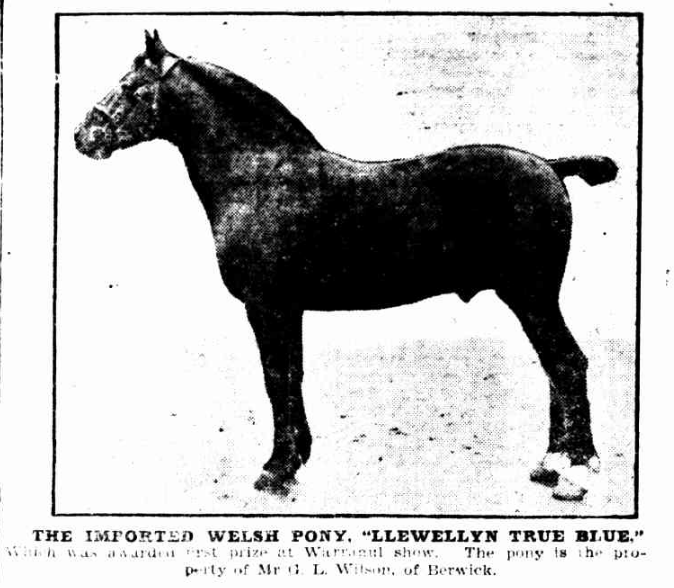
Background Breeds
Janet Lane on Waler Data Base @ Facebook. Image: Weekly Times (Melbourne), Saturday 20 March 1909.
More background breeds of the Waler – Welsh ponies and Cobs. Using mostly newspaper photos as none otherwise, except later imports, in archives.
Apart from the Timor, Welsh were the most numerous imported ponies over the nineteenth and early twentieth century. Their blood went into Australian ponies and horses in so many ways and in every state and Territory. Pony racing was huge, and polo had to be played on ponies until the height became open in the twentieth century. We bred and sold countless ponies overseas – shiploads.
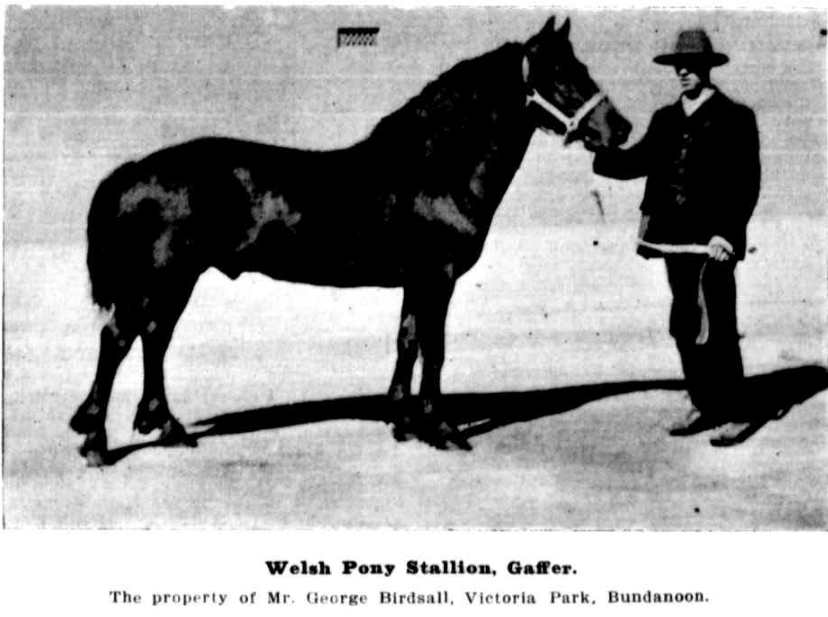
Australian Town and Country Journal (Sydney), Wednesday 17 October 1906
‘Mr George Birdsall, of Victoria Park, Bundanoon. recently landed in Sydney a very superior Welsh pony stallion, Gaffer, which was selected for him by Mr. John Moir, of Darlinghurst, from the stud of the well-known Welsh pony breeder, Mr G. Nixon, of Garvoc, Victoria. The pony ls a dark mahogany brown, standing 13 hands high, has great action, and immense strength, being a miniature model of the modern Clydesdale stallion. His sire is Hero, by Polo (imp.), the only pony that ever beat successively the celebrated Dandy, and he is also the sire of the champion pony stallion at the last Melbourne Show. His dam is Jenty, by the Imported Llyncropper, and his grand-dam by Mr. Kennedy’s famous Tam-o’-Shanter. Gaffer gained first prize at Colac out of a field of 10 entries, and was second at Warrnambool, being beaten by his own sire.’
There was no studbook then however Welsh ponies and cobs were recognised. The UK studbook Society began in 1901. In Australia they were recorded as Australian Ponies until 1969, when the Society here was formed. We now know four types : A – or mountain pony; B – the lightest type; C – cob pony; and D – cob over 13.2 hh to open height.
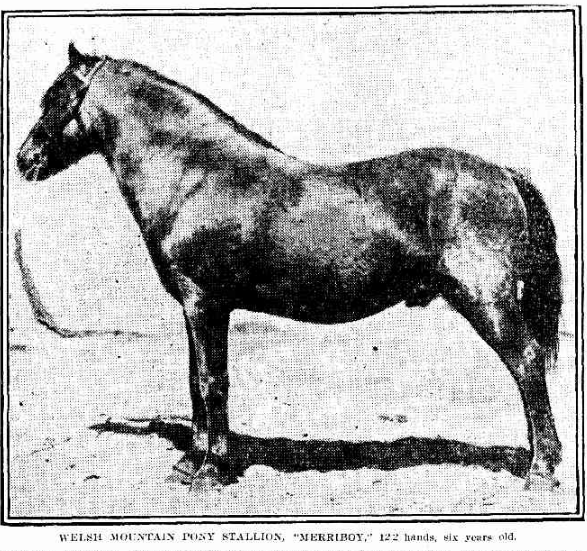
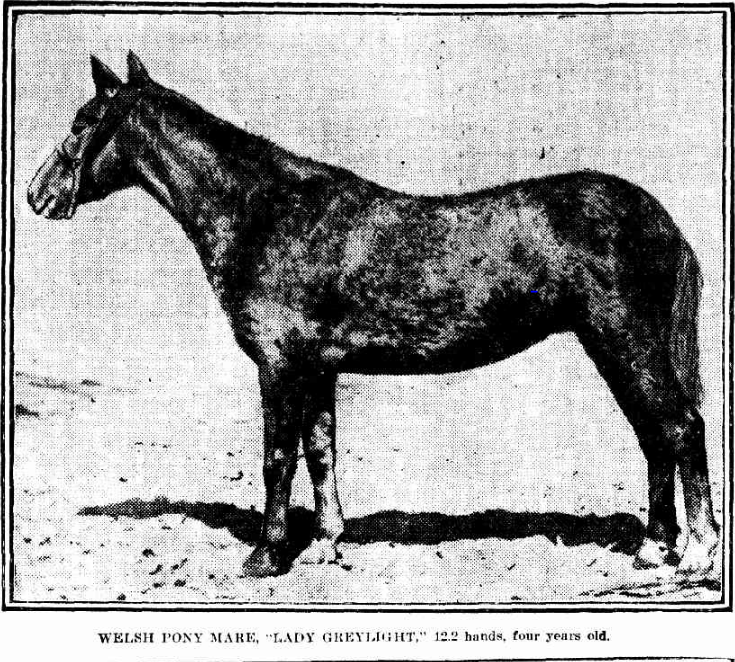
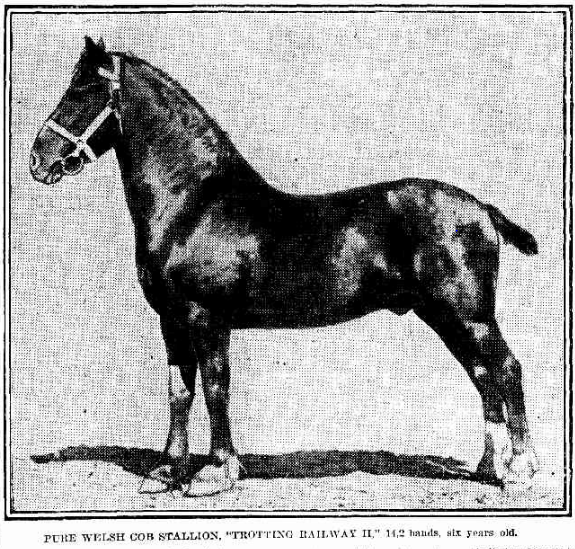
Daily Telegraph (Sydney), Saturday 29 October 1910: Merriboy, Lady Greylight, Trotting Railway II
The genesis of the cobs is fascinating. In our horse days there were several cob breeds – the Norfolk, Lincolnshire, Welsh. Having a fast stylish roadster was fashionable – few wanted fine light horses – ‘weeds’ were considered the mark of a non-horseman. As the Hackney developed, it gained Welsh blood and vice versa. Norfolk and Lincolnshire blood went into the Welsh cob. Imported Arabs were brought into Wales which refined the breed (famously in the Greylight line). The hardy mountain pony, able to live outdoors in all weathers, handsome with great action and importantly, great bone, was developed into two basic types for the uses required – mountain pony and cob. Later refined into the 4 types.
Australasian (Melbourne), Saturday 24 August 1912
‘A good deal of confusion exists not only in Australia but in Great Britain as to what constitutes a Welsh pony, and there, as well as here, hackneys are often shown under this name. In 1901 a society with the object of improving and encouraging the breeding of Welsh mountain ponies, Welsh ponies and cobs, was formed, and definitions drawn up, judges appointed, &c. Thus ponies entered in section A, Part I, must not be hogged nor docked, must show unquestioned descent not further back than grandsire or granddam from animals that were foaled on the mountains of Wales, or from ponies already entered in the section and, when full grown, must not exceed 12 hands 2 in. high. The pony whose photo, by P. Abrahams, Adelong, is here shown, is owned by Mrs. D. T. Davies, of Mt. Horeb, NSW. Mr,. Davies is a descendant of a very old Welsh family who have been breeding both Welsh ponies, and Welsh cobs for generations; and he has been fighting for some time to get a distinct line recognised between Welsh cob stallions and hackney cob stallions, also between ponies, which are a distinct breed, and small horses which are not. The subject of pony breeding is of great interest just now, as many experts contend that by judicious use of strong, sturdy breeds, the army remount horse is to be built up.’
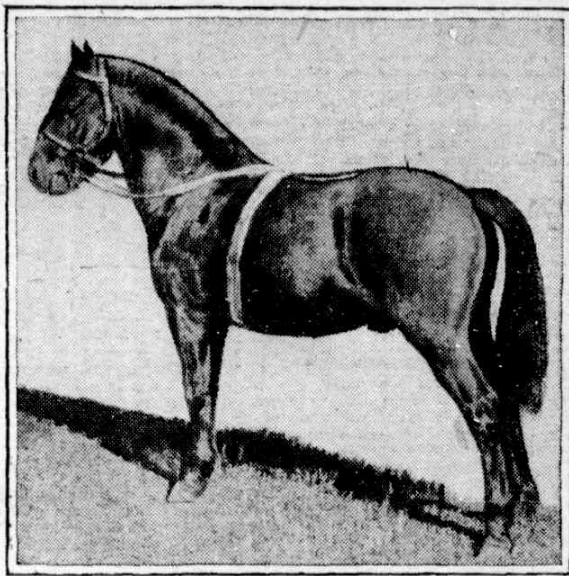
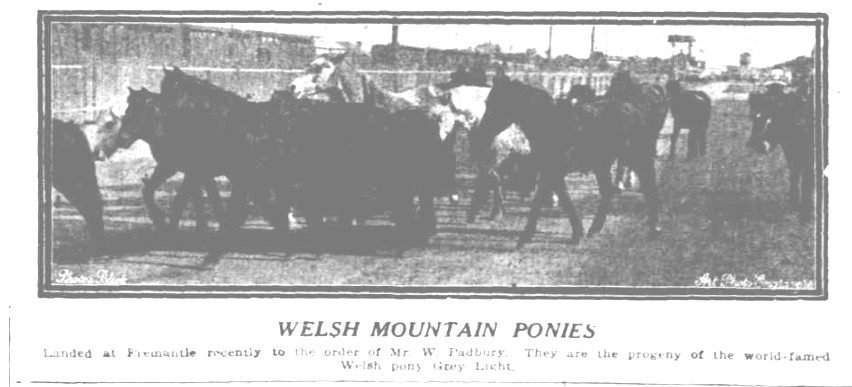
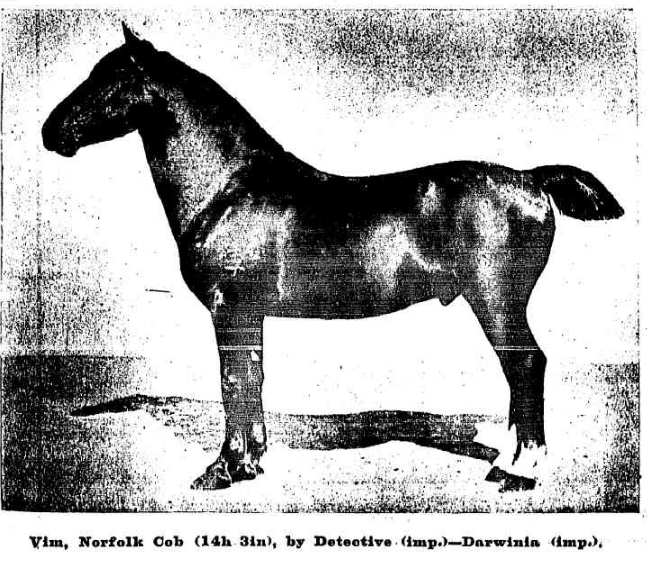
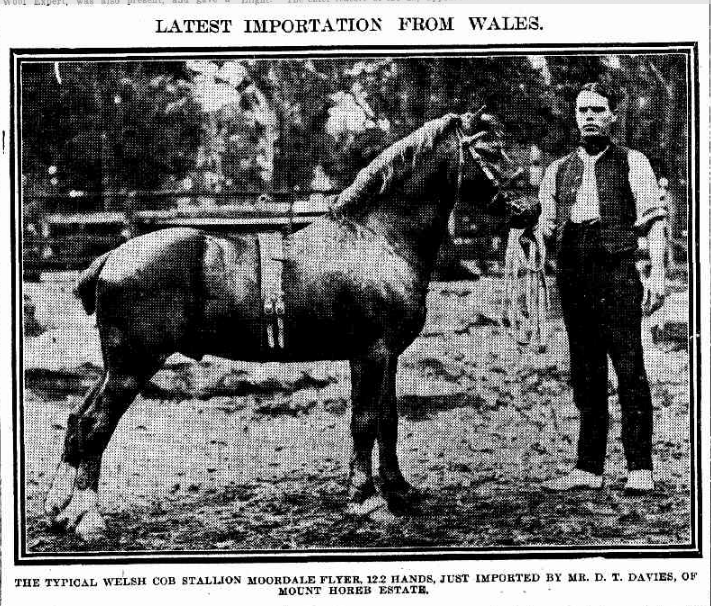
Images: Australian Town and Country Journal (Sydney), Wednesday 15 August 1906; Daily Telegraph (Sydney), Friday 1 December 1911
They probably came here in the late 1700’s however the first mention I can find is a dapple-grey Welsh (also spelled Welch then) Pony stallion imported in 1827 on the Marquis of Anglesey by the Australian Agricultural Co. who stood him to stud for years at Port Stephen, NSW. This company imported many other Welsh ponies. In 1830 they listed 16 Welsh Ponies. In 1838 several Welsh Ponies were auctioned in Sydney. In 1840 the AACo bought Sampson, a Welsh pony stallion, for 87 pounds. Also that year a Welsh Pony was sold at Port Phillip, Vic. Countless examples of the breeds in later years. In the 1850’s many were imported to Western Australia.
Their blood went into the Thoroughbred here too. The influential pony sire Tam O’Shanter, imported here about 1860, was a Welsh Pony. These ponies were raced hard here, hunted, used for shepherd’s ponies, polo, driving, taken to stations for breeding. The cobs were weight carriers and superlative driving horses, active and powerful.
Image: Australasian (Melbourne), Saturday 2 June 1906
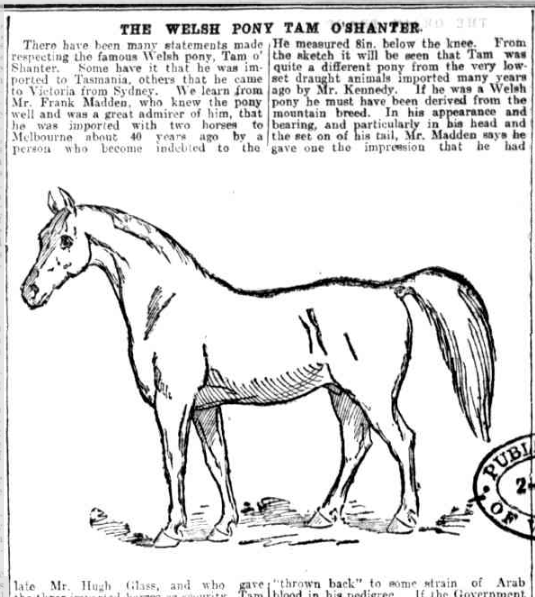
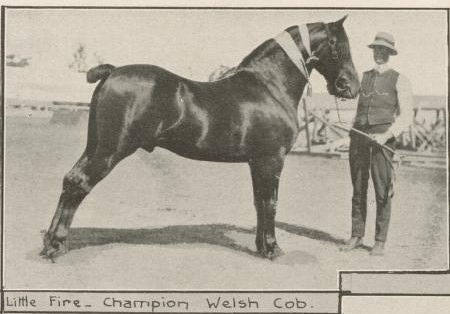
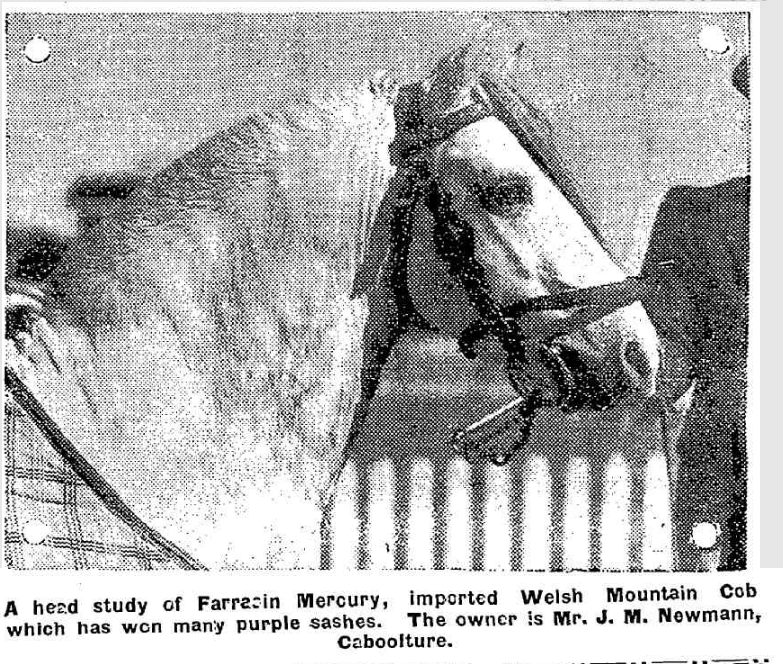
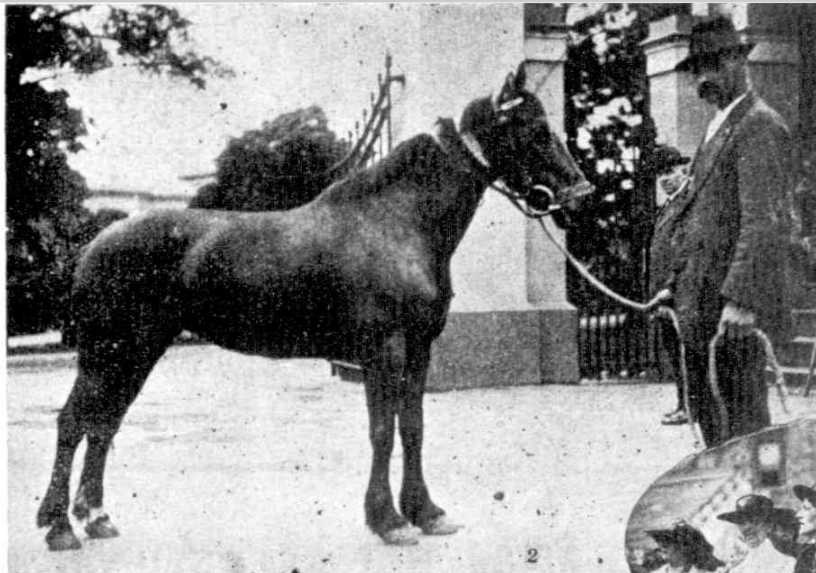
Images: Queenslander Pictorial, supplement to The Queenslander, 22 August, 1914; Nambour Chronicle and North Coast Advertiser (Qld), Friday 10 August 1934; Port Adelaide News (SA), Friday 26 October 1917
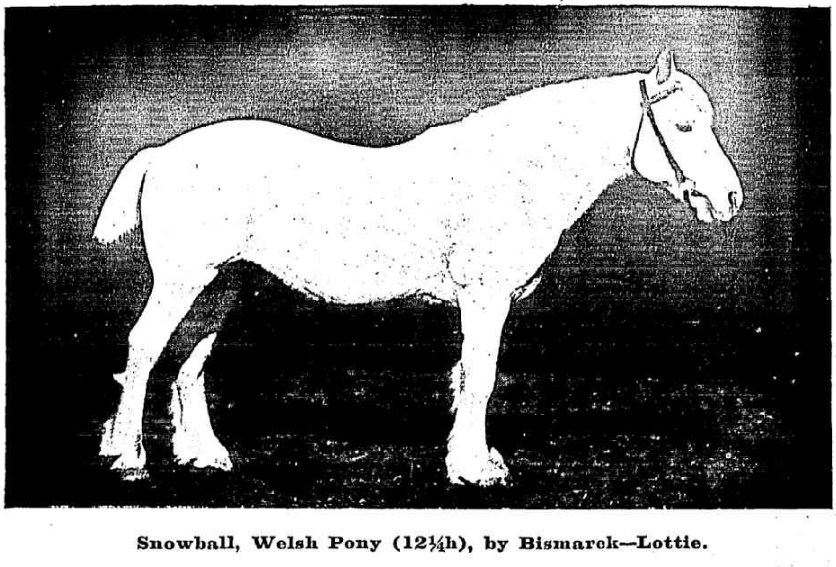
Australian Town and Country Journal (Sydney), Wednesday 15 August 1906
Snowball is a Welsh pony 12.1 hands high, by Bismarck from Lottie. Snowball was bred in South Australia, and since his purchase, five years ago, has proved himself a very good sire. Although only 12.1 hands, he measures well below the knee, and carries his owner as easily as a larger horse. He ls a true type of Welsh pony, and a Welshman thus spoke of him the other day: “He is the truest type of Welsh pony I have seen out of Wales.”
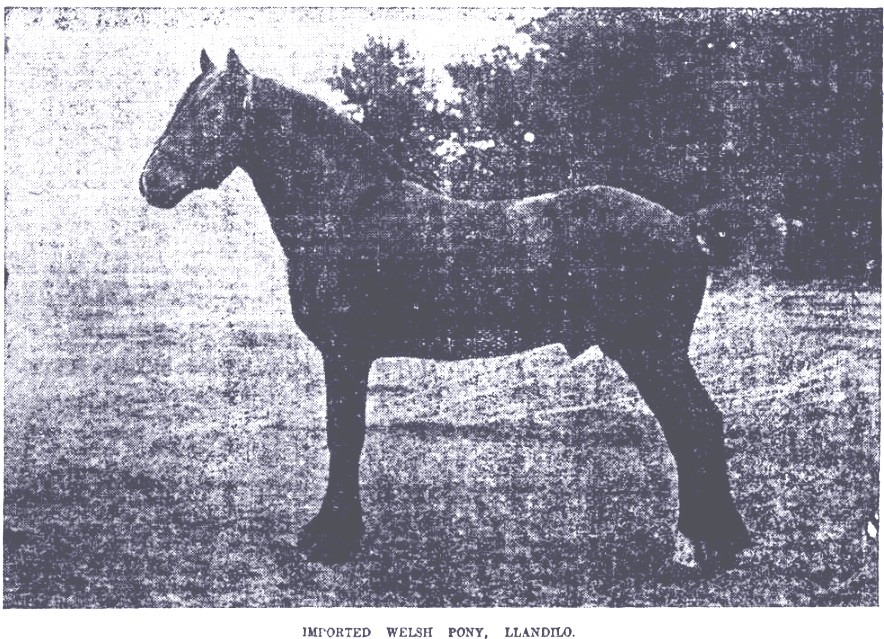
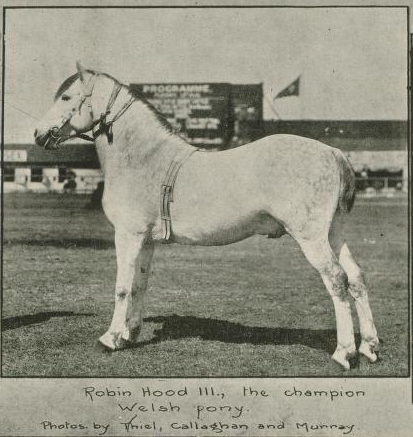
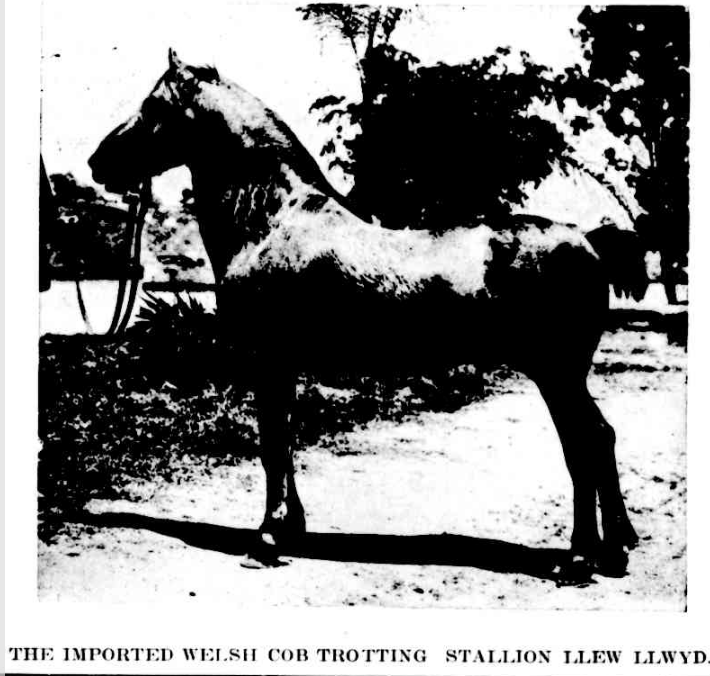
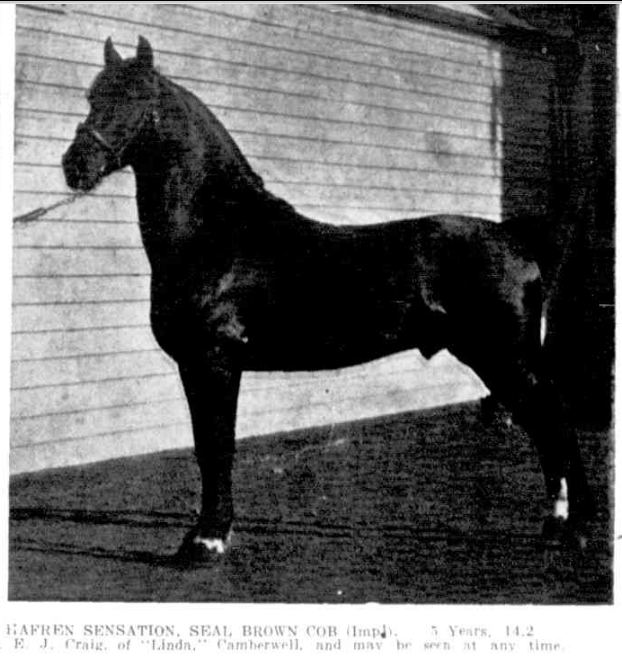
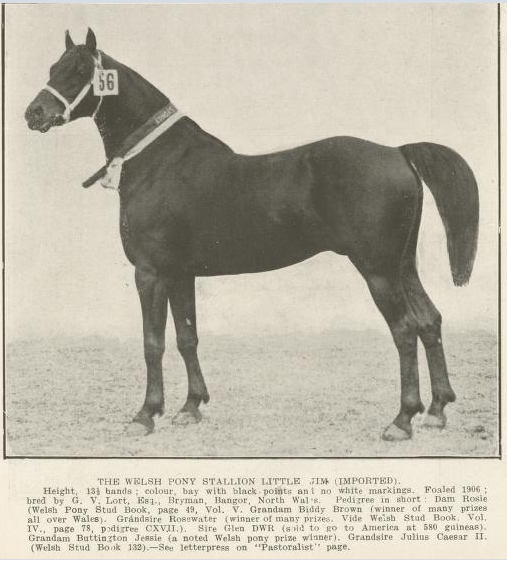
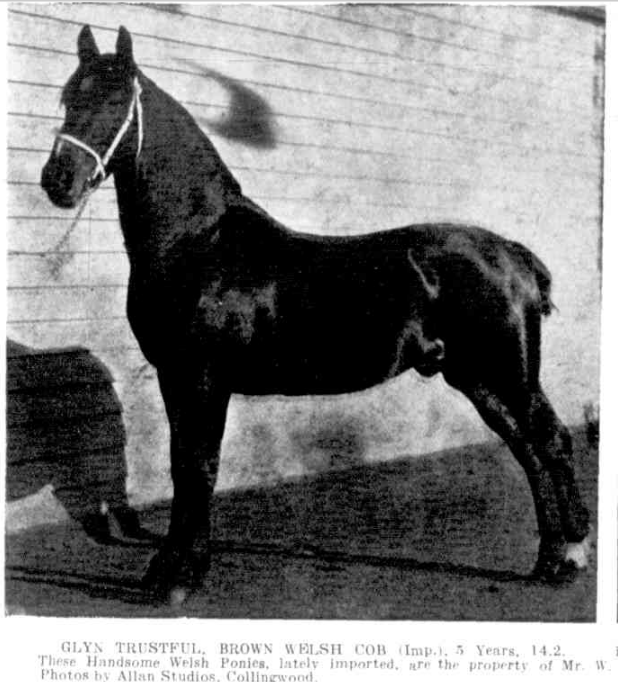
Images: Leader (Melbourne), Saturday 5 February 1910; Queenslander Pictorial, supplement to The Queenslander, 24 August, 1918; Queenslander (Brisbane), Saturday 28 November 1908; Punch (Melbourne), Thursday 27 October 1910; Queenslander Pictorial, supplement to The Queenslander, 12 May, 1917; Punch (Melbourne), Thursday 27 October 1910
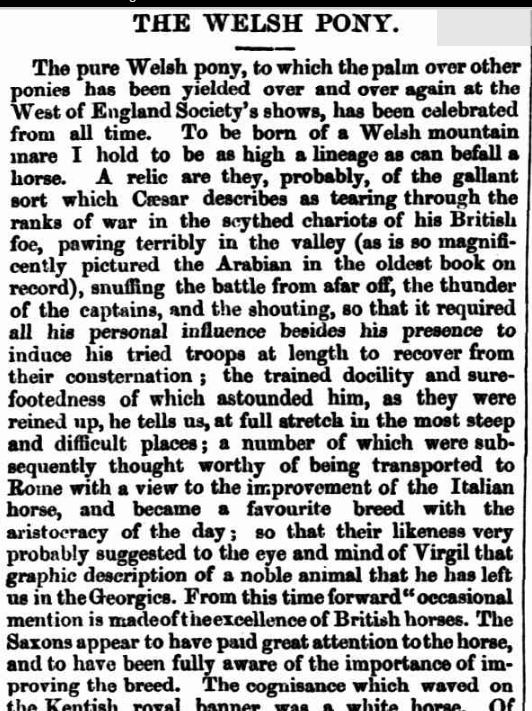
South Australian Weekly Chronicle, Saturday 29 March 1862
The cognisance which waved on the Kentish royal banner was a white horse. Of what character were the native breeds up to the Norman conquest it is now impossible even to guess.
That they were powerful and well suited to the purposes of war, both by their stature and training, we have the testimony of Caesar before-mentioned, and of subsequent historians ; but the first attempt on record to improve the native stock by the introduction of foreign blood occurred during the reign of William the Conqueror, when Robert de Belleme, Earl of Shrewsbury, imported the elegant and docile Spanish horse, and bred from it on his estates in Powis land; and it is recorded that the horses of that part of Wales were long celebrated for their swiftness — a quality which they doubtless derived from this happy mixture of blood.’ — (Yarrell). At a subsequent period there is a tradition of some foreign horses swimming ashore from a wreck in the British Channel and escaping clear to the hills.
— Seever’s Notes on Fields and Cattle.